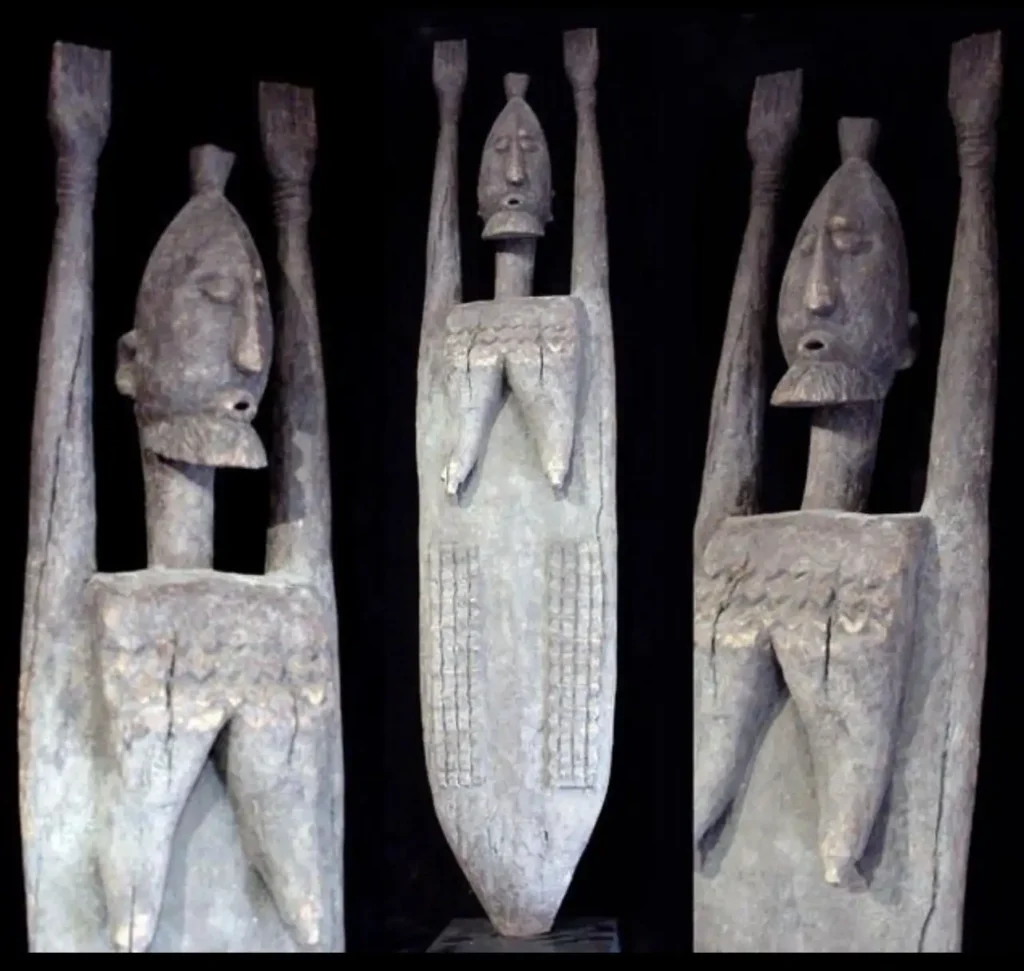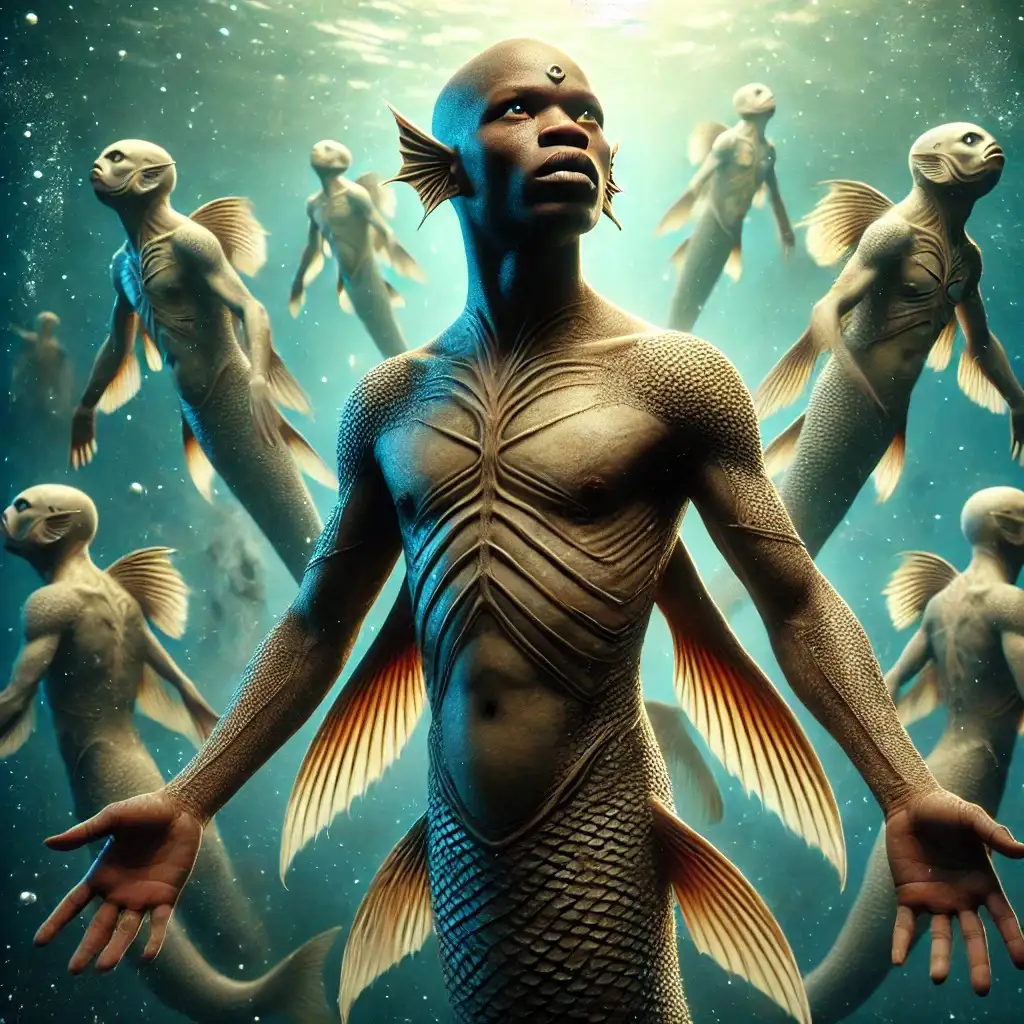The Dogon, Dreams, and the Cosmos: Ancient Wisdom, Lucid Pathways, and the Interstellar Connection
The Dogon: Yes, cuneiform from ancient Sumer (modern-day Iraq) is widely considered the oldest known form of writing, dating back to around 3100 BCE. It was primarily used for recording economic transactions, legal codes, literature (such as the Epic of Gilgamesh), and administrative matters. Some of the earliest cuneiform tablets are preserved in institutions like the British Museum in London, which houses a significant collection of Mesopotamian artifacts, including those from Sumer, Akkad, Babylon, and Assyria.
Cuneiform predates the Dead Sea Scrolls by thousands of years. The Dead Sea Scrolls, discovered in the mid-20th century, date back to around 300 BCE to 100 CE and primarily contain Jewish religious texts, including some of the oldest known versions of the Hebrew Bible.
Regarding ancient texts that reference intergalactic beings or advanced knowledge, many traditions have mythological or symbolic interpretations that suggest encounters with higher intelligences. Examples include:
- The Upanishads (India): Ancient Vedic texts dating from around 800–200 BCE, which explore metaphysical concepts such as the nature of the self (Atman) and the universal consciousness (Brahman). Some interpretations suggest links to cosmic wisdom or beings beyond Earth.
- The Emerald Tablets of Thoth: Allegedly ancient texts attributed to the Egyptian deity Thoth (or Hermes Trismegistus in Greco-Roman tradition), which discuss alchemy, immortality, and hidden knowledge. These texts have inspired various esoteric traditions and speculation about their origins, including links to extraterrestrial intelligence.
- Other Traditions: Cultures worldwide, including the Dogon people of West Africa, ancient Mesoamerican civilizations, and Sumerian mythology (e.g., the Anunnaki), have myths that some interpret as references to advanced beings or knowledge possibly beyond earthly origins.
The fascination with interstellar or non-human intelligence in ancient texts is often linked to the idea that early civilizations had contact with advanced knowledge—whether from extraterrestrial sources or highly advanced human predecessors. However, mainstream archaeology and history typically interpret these texts as metaphorical, symbolic, or reflective of human curiosity about the cosmos rather than literal accounts of extraterrestrial contact.
The Dogon, Sirius, and the Nommo
The Dogon people, an ethnic group from Mali in West Africa, are known for their deep astronomical knowledge, which has fascinated researchers and sparked speculation about possible ancient extraterrestrial contact. They primarily inhabit the Bandiagara Escarpment, a rugged, arid region in central Mali, where they have maintained a rich cultural heritage of myths, rituals, and knowledge systems.
One of the most intriguing aspects of Dogon tradition is their knowledge of the Sirius star system—particularly Sirius B, a white dwarf star that is invisible to the naked eye. According to their oral traditions, the Dogon claim that their ancestors received knowledge about Sirius from beings known as the Nommo—amphibious, fish-like or dolphin-like entities said to have descended from the sky. These beings, sometimes described as “water spirits” or celestial teachers, are believed to have imparted wisdom about astronomy, agriculture, and spiritual teachings.

The Dogon’s awareness of Sirius B’s existence, its elliptical orbit around Sirius A, and its high density—facts only confirmed by Western science in the 20th century—has led to speculation about how they could have acquired such precise knowledge without modern technology. Some suggest ancient contact with advanced civilizations, possibly extraterrestrial. Others propose that such knowledge could have been passed down through indirect cultural exchanges or inferred through careful observation and symbolic storytelling.
Skeptics argue that much of the Dogon’s astronomical knowledge could have been influenced by early European explorers or anthropologists who visited the region before the claims were widely published. However, proponents of the ancient astronaut theory believe that the Dogon’s myths and rituals point to interactions with advanced, non-human intelligence—possibly extraterrestrial beings resembling dolphins or amphibians.

The Nommo feature prominently in Dogon cosmology, which describes them as both creators and intermediaries between humans and the divine. Their mythology includes themes of water, rebirth, and a deep connection to the cosmos—mirroring motifs found in other ancient civilizations with similar “gods from the sea” stories, such as Oannes in Mesopotamian mythology or the fish gods of ancient South America.
Whether the Dogon’s knowledge is a result of lost ancient wisdom, cross-cultural exchanges, or something more mysterious, their traditions continue to inspire curiosity and debate about humanity’s past and its potential connections to the stars.
Dogon Cosmology and Dreams
The Dogon people of Mali possess a rich cosmology that intricately links dreams, the universe, and spiritual harmony. Their traditions offer profound insights into the interconnectedness of all existence. While direct documentation of Dogon elders discussing dream practices is limited, their cosmological narratives provide a foundation for exploring lucid dreaming and meditation techniques inspired by their philosophies.
Central to Dogon belief is the concept that the universe originated from a cosmic egg, which, upon vibrating and opening, gave birth to all creation. This narrative emphasizes the unity of the macrocosm and microcosm, suggesting that understanding the universe can be achieved through introspection and inner exploration.
Lucid Dreaming and Meditation Techniques Inspired by Dogon Belief
To delve into lucid dreaming and meditation practices aligned with Dogon-inspired philosophies, consider the following approaches:
- Dream Journaling:
Maintain a journal to record your dreams upon waking. This practice enhances dream recall and reveals recurring themes, aiding in recognizing dream states. - Reality Testing:
Regularly question your state of consciousness during the day by asking, “Am I dreaming?” This habit can carry over into dreams, triggering lucidity. - Mindfulness Meditation:
Engage in daily mindfulness to heighten self-awareness, a key component in achieving lucidity during dreams. - Intention Setting (Mnemonic Induction of Lucid Dreams – MILD):
Before sleeping, affirm your intention to become aware during dreams by repeating phrases like, “I will realize I’m dreaming.” - Wake Back to Bed (WBTB):
Set an alarm to wake up after 4–6 hours of sleep, stay awake briefly, then return to sleep with the aim of re-entering a dream consciously.
These methods, rooted in enhancing self-awareness and introspection, resonate with the Dogon emphasis on understanding the universe through inner exploration.
A Broader Framework of Dreaming in Dogon Thought
You’re not reading too much into it—dreams and cosmology play a significant role in Dogon culture, but their connection to dreams might not be as explicitly emphasized in the way modern dream exploration practices, such as lucid dreaming, are framed today.
In Dogon tradition, their cosmology is deeply symbolic and tied to oral teachings, mythology, and rituals that encompass a profound understanding of the universe. Dreams, visions, and symbolic interpretations are woven into their worldview, as they believe in a deep interconnection between the human experience and cosmic forces. However, rather than focusing exclusively on personal dream experiences as a form of introspection (as in Tibetan Dream Yoga or Western lucid dreaming practices), the Dogon integrate dreams into a broader spiritual and philosophical framework that includes:
- Communication with the Ancestors and Spirits:
The Dogon believe that dreams can serve as messages from the spiritual realm, offering guidance from ancestors or deities such as the Nommo. - Cosmic Knowledge Passed Through Oral Tradition:
Some of their detailed astronomical knowledge—such as their awareness of the Sirius star system—has been attributed to ancestral teachings, potentially received through visions or symbolic dreams. - Sacred Rituals and Symbolism:
Rituals involving masks, dance, and storytelling often incorporate dream-like symbolism, reinforcing their cosmology and connection to the unseen world. - Duality and Spiritual Navigation:
Dogon philosophy embraces the duality of existence (the visible and invisible, the earthly and celestial), and dreams might be seen as a bridge between these realms.
While dreams are an important part of their spiritual beliefs, it’s not necessarily in the structured or systematic way that some other cultures approach dreamwork. Instead, their cosmology encourages a holistic view where dreams, mythology, and lived experience are all connected expressions of the universal order.

Dreams as a Portal to the Universe
Once you immerse yourself deeply enough in dreamwork, it becomes clear that dreams aren’t just isolated experiences but part of a larger, interconnected reality—something ancient cultures like the Dogon understood intuitively. In Western society, dreams are often seen as personal, psychological phenomena, but many traditional cultures perceive them as bridges to universal wisdom, ancestral knowledge, and the unseen forces that shape existence.
The Dogon and other indigenous peoples have long embraced the idea that dreams are woven into the fabric of reality, serving as messages, guides, and reflections of the cosmic order. In this view, the distinction between waking life and the dream world blurs, reinforcing the idea that everything is interconnected—dreams are not just internal processes but interactions with a greater, more profound reality.
Once you tap into this perspective, you start to see how modern Western approaches, which often compartmentalize experiences, can limit the deeper understanding of dreams. Instead of analyzing them purely through a psychological lens, embracing them as part of a holistic existence—like the Dogon do—can lead to richer, more meaningful experiences.
